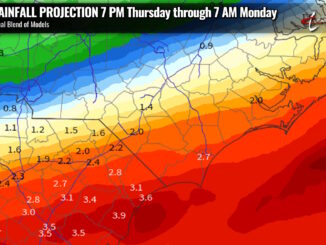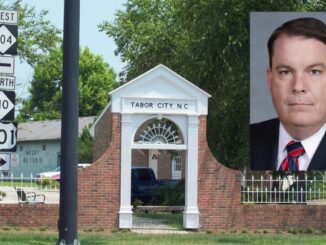
BPC-157 and TB-500: Exploring the Hypothetical Synergy of Two Research Peptides
Peptide research has emerged as a rapidly expanding field, with investigators increasingly drawn to small amino acid chains for their intriguing structural and biochemical properties. Among the numerous compounds under exploration, BPC-157 and TB-500 stand out as peptides that have individually attracted significant attention due to their potential roles in cellular organization, angiogenic signaling, and regenerative pathways. When considered together as a blend, researchers have speculated about possible overlapping or complementary properties that might open new directions in molecular biology, tissue repair studies, and even systems-level investigations of organismal resilience.
The exploration of peptide blends is still in its early stages, yet theorizing about their combined properties offers a stimulating exercise in scientific imagination. Research indicates that peptides like BPC-157 and TB-500 may engage with distinct, yet potentially convergent, molecular cascades. This raises questions about how their interaction landscapes might overlap, intersect, or even potentiate each other’s impacts within research models.
This article outlines the biochemical properties of each peptide, reviews their individual domains of investigation, and speculates on what their combined study might reveal for peptide science.
Biochemical Identity and Properties of BPC-157
BPC-157, a pentadecapeptide consisting of 15 amino acids, originates from a larger protein sequence identified in gastric juice. Researchers suggest that its stability and solubility contribute to its utility in controlled experimental settings. It has been hypothesized that the peptide might interact with growth factor receptors, nitric oxide pathways, and cellular adhesion molecules.
Investigations purport that BPC-157 might influence cytoskeletal reorganization, impacting the structural arrangement of fibroblasts and endothelial cells in research models. The peptide has also been theorized to modulate signaling molecules such as VEGF and FAK, which play important roles in angiogenesis and cellular communication. Research indicates that BPC-157 might participate in regulatory loops that support tissue repair studies, with implications for investigating regenerative biology.

Biochemical Identity and Properties of TB-500
TB-500 is a synthetic derivative of thymosin beta-4, a naturally occurring protein involved in actin regulation. At its core, TB-500 contains the actin-binding motif responsible for controlling cytoskeletal dynamics. The peptide is believed to contribute to enhanced cellular migration and proliferation within research models by modulating actin polymerization.
Research suggests that TB-500 might also impact angiogenesis, potentially by influencing vascular endothelial growth factor (VEGF) signaling pathways. Investigators have theorized that TB-500 may play a role in cell survival cascades, including those associated with mitochondrial stability and anti-apoptotic signaling. Its documented properties have prompted hypotheses about its potential applications across wound repair investigations, cardiovascular studies, and regenerative sciences.
Theoretical Overlap: Why Consider BPC-157 and TB-500 Together?
When evaluating peptide blends, one guiding question is whether the individual peptides address distinct but converging pathways. BPC-157 is frequently associated with regulatory impacts on endothelial cells and nitric oxide signaling, whereas TB-500 is theorized to act primarily on actin dynamics and cellular migration. This distinction hints at complementary mechanisms: one peptide seems to initiate or stabilize the signaling environment for vascular and tissue growth, while the other appears to facilitate the cellular movement and cytoskeletal organization required for structural remodeling.
Potential Research Domains
- Tissue Research
Investigations purport that both peptides may support research into tissue regeneration. BPC-157 is thought to stabilize vascular growth, while TB-500 may enhance cell migration toward the site of repair. Their combined potential properties could create a multi-dimensional framework for examining how tissues regain structural integrity after experimental injury.
- Cardiovascular and Angiogenesis Studies
The role of angiogenesis is central in cardiovascular research. BPC-157 has been theorized to regulate nitric oxide pathways, while TB-500 is associated with vascular endothelial dynamics. A blend of the two might therefore allow researchers to explore how vascular networks are simultaneously stabilized and expanded, providing insights into cardiovascular resilience and remodeling in research models.
- Neurological Investigations
Although primarily studied in regenerative and vascular contexts, speculation exists about how peptides like BPC-157 and TB-500 might interact with neurological tissues. BPC-157 is hypothesized to influence neurotransmitter release and neurotrophic factors, while TB-500 might impact cytoskeletal frameworks within neurons. Together, they could provide new avenues for investigating neuronal survival, plasticity, and axonal growth.
- Musculoskeletal Research
The musculoskeletal system offers another domain where these peptides may hold promise. BPC-157 has been linked with tendon-to-bone healing studies, while TB-500 is theorized to accelerate cell migration and matrix deposition. Research indicates that their blend might enable new strategies for studying complex musculoskeletal remodeling, including tendon, ligament, and cartilage investigations.
- Inflammatory Pathways and Cellular Stress
Research suggests that both peptides might influence inflammatory signaling cascades. BPC-157 has been hypothesized to interact with cytokine networks, potentially down-modulating excessive inflammatory responses. TB-500, through its possible role in actin regulation, might also impact immune cell migration and activity. A peptide blend could therefore allow researchers to investigate how cellular stress responses and inflammation are modulated at multiple levels simultaneously.
Speculative Mechanistic Interactions
The potential convergence of BPC-157 and TB-500 remains largely hypothetical, but several possible mechanisms warrant consideration:
- Angiogenic Synchronization: Studies suggest that BPC-157 may modulate VEGF receptor activity, while TB-500 might enhance endothelial cell migration. Together, this could create an experimental setting where vascular expansion and stabilization occur in concert.
- Cytoskeletal and Extracellular Matrix Coupling: Research indicates that TB-500 might regulate actin polymerization, while BPC-157 could influence extracellular matrix signaling through integrins and adhesion molecules. This dual action might enhance cellular scaffolding and mechanical stability.
- Neurovascular Integration: Investigations purport that the peptides may intersect in pathways connecting vascular stability with neuronal signaling, providing a framework for future neurovascular research.
- Systemic Resilience in Research Models: Findings imply that by combining peptides that act on cellular migration, angiogenesis, and inflammatory regulation, investigators might explore organism-wide resilience and repair under controlled conditions.
Future Exploration
The concept of peptide blends invites researchers to think beyond single-compound pathways and toward integrated networks of biological regulation. In the case of BPC-157 and TB-500, the speculation revolves around whether their combined study in research models might reveal synergies not evident when each peptide is studied in isolation.
Potential areas for future exploration include:
- Mapping the shared signaling nodes influenced by both peptides.
- Investigating the temporal dynamics of their impacts on endothelial versus cytoskeletal processes.
- Exploring the possibility of feedback loops between angiogenesis and actin polymerization.
- Extending the scope of research beyond localized tissue repair to organismal homeostasis.
Conclusion
The peptides BPC-157 and TB-500 occupy distinct but overlapping niches in peptide research. While BPC-157 is hypothesized to stabilize vascular and signaling environments, TB-500 is theorized to regulate cytoskeletal architecture and cell migration. When considered together, their properties may intersect in ways that suggest synergistic impacts on regeneration, angiogenesis, neurological plasticity, and musculoskeletal remodeling.
Research into peptide blends remains at an early stage. Yet, the combination of BPC-157 and TB-500 represents a compelling model for imagining how multiple pathways might converge to produce novel insights in peptide science. By investigating these peptides side by side, researchers may uncover not only their individual properties but also the larger frameworks of biological resilience and repair that they potentially illuminate. Visit www.corepeptides.com for more useful peptide data.
References
[i] Philp, D., Hernanadez, G., Kleinman, H. K., & Goldstein, A. L. (2004). Thymosin-β4 promotes angiogenesis, wound healing, and hair growth in both normal and aged rodents. Journal of Investigative Dermatology, 123(3), 468-477.
[ii] Bock-Marquette, I., Saxena, A., White, M., Dimaio, J., & Srivastava, D. (2004). Thymosin Beta-4 activates integrin-linked kinase and promotes cardiac cell migration, survival and repair.Nature, 432(7016), 466-472.
[iii] Sim, D., Chuong, C.-M., Goldstein, A. L., & Kleinman, H. K. (2010). Neuroprotective and neurorestorative effects of Thymosin β-4 after central nervous system injury.Annals of the New York Academy of Sciences, 1194, 185-192.
[iv] Wyczółkowska, J., Krawczycka, A., Wójcik-Pszczola, K., & Maslanka, E. (2007). Thymosin β4 and thymosin β4-derived peptides induce mast cell degranulation.Peptides, 28(1), 23-29.
[v] Ho, J. W. K., WADA / AMA research consortium. (2024). Simultaneous quantification of TB-500 and its metabolites in vitro and in vivo by UHPLC-Q-Exactive orbitrap MS/MS and their screening by wound-healing activities.Journal of Chromatography B, 124033.
(Contributed Post)



























